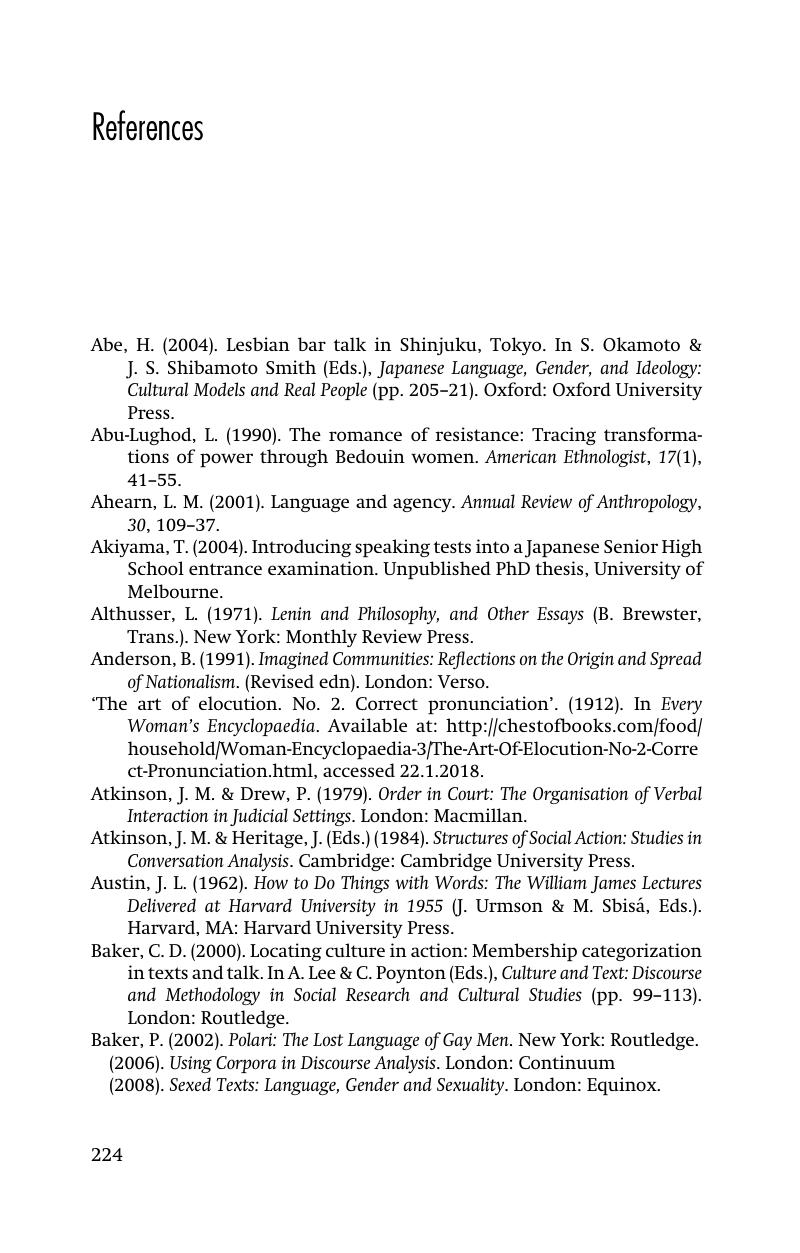Book contents
- Language and Subjectivity
- Key Topics in Applied Linguistics
- Language and Subjectivity
- Copyright page
- Dedication
- Contents
- Figures
- Tables
- Acknowledgements
- 1 The Construction of the Subject
- 2 Discourses of Gender and Sexuality
- 3 Recognition and the Colonial Other
- 4 Racist Discourse and Everyday Language
- 5 Language Learning and Subjectivity
- 6 Discourse and Subjectivity in Face-to-Face Interaction (1): The Interaction Order
- 7 Discourse and Subjectivity in Face-to-Face Interaction (2): Inscribing Gender
- 8 Categorizing Others in Casual Conversation
- 9 Technologies of Subjectivity: Language Tests and Identification
- 10 Conclusion: Discourse and Discipline
- Glossary
- References
- Index
- References
References
Published online by Cambridge University Press: 20 February 2019
- Language and Subjectivity
- Key Topics in Applied Linguistics
- Language and Subjectivity
- Copyright page
- Dedication
- Contents
- Figures
- Tables
- Acknowledgements
- 1 The Construction of the Subject
- 2 Discourses of Gender and Sexuality
- 3 Recognition and the Colonial Other
- 4 Racist Discourse and Everyday Language
- 5 Language Learning and Subjectivity
- 6 Discourse and Subjectivity in Face-to-Face Interaction (1): The Interaction Order
- 7 Discourse and Subjectivity in Face-to-Face Interaction (2): Inscribing Gender
- 8 Categorizing Others in Casual Conversation
- 9 Technologies of Subjectivity: Language Tests and Identification
- 10 Conclusion: Discourse and Discipline
- Glossary
- References
- Index
- References
Summary

- Type
- Chapter
- Information
- Language and Subjectivity , pp. 224 - 239Publisher: Cambridge University PressPrint publication year: 2019



